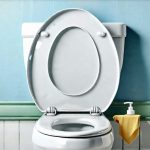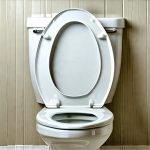Marathon training is arguably one of the most demanding physical endeavors an individual can undertake. It’s not just about covering 26.2 miles; it’s about months of dedicated preparation that fundamentally alters physiological systems. While much focus rightly centers on cardiovascular fitness, muscle endurance, and fueling strategies, a surprisingly common and often-embarrassing side effect frequently goes undiscussed: changes in stool output. Runners often experience shifts in bowel habits – frequency, consistency, urgency – as their training progresses, and understanding why these changes occur is crucial for both physical comfort and maintaining peak performance. Ignoring these signals can lead to significant disruptions during long runs or even race day itself.
These gastrointestinal (GI) disturbances aren’t a sign of weakness or improper training; they are often an entirely predictable consequence of the physiological stress imposed by marathon preparation. Increased mileage, intensified workouts, altered dietary needs, and hormonal fluctuations all play a role in impacting the digestive system. Furthermore, individual responses vary considerably; what one runner experiences may be vastly different from another. This article aims to delve into the common changes runners experience with stool output during training, explore the underlying mechanisms causing these shifts, and offer practical strategies for managing them effectively—always remembering that individualized approaches are best and consulting a healthcare professional is paramount when concerns arise. Understanding stool signs can be very helpful in this process.
Physiological Changes & Stool Output During Training
As mileage increases, the body prioritizes blood flow to working muscles, often at the expense of other systems including digestion. This redistribution can slow down gut motility – the speed at which food moves through the digestive tract. Slower transit time means more water is absorbed from the stool, leading to constipation or harder stools. Conversely, the stress and intensity of running can also increase cortisol levels, a hormone that can accelerate gut motility in some individuals, resulting in more frequent bowel movements and potentially diarrhea. It’s a delicate balance and highly individual.
The demands placed on the body during marathon training also necessitate increased caloric intake – often with a shift towards carbohydrate-rich foods to fuel running efforts. This significant increase in food volume, particularly fiber from healthy sources like fruits and vegetables, can contribute to changes in stool bulk and frequency. The type of carbohydrates consumed is important too; simple sugars may be absorbed quickly but can also cause osmotic diarrhea, drawing water into the intestines. Runners might also experience increased permeability of the intestinal lining during intense exercise – sometimes referred to as “leaky gut” – though this remains a complex and debated area within sports science. Increased permeability can lead to inflammation and altered stool consistency. A first step in understanding these changes is proper investigation.
Finally, dehydration is a common issue for runners, especially during long runs in warm weather. When dehydrated, the body pulls water from all sources, including the colon, resulting in harder stools and constipation. Conversely, attempting to rehydrate rapidly with large volumes of water, particularly if electrolytes are not adequately replaced, can sometimes lead to watery stools. It’s a complex interplay between hydration status, gut motility, and dietary choices that ultimately determine stool output during training. Doctors track these changes over time to get the full picture.
Identifying & Understanding the Shifts
Recognizing changes in your bowel habits is the first step towards managing them. Keep a running log – not just of mileage, but also of what you eat, when you hydrate, and how your digestion feels. Pay attention to:
- Frequency: Are you going more or less often than usual?
- Consistency: Is stool hard, soft, watery, or mucusy? The Bristol Stool Chart can be a helpful visual guide for assessing this.
- Urgency: Do you experience sudden and strong urges to go?
- Bloating & Gas: Are you experiencing excessive bloating or flatulence?
These observations will help you identify patterns and potential triggers. For example, noticing diarrhea consistently after consuming energy gels during long runs suggests a sensitivity to specific ingredients. Similarly, constipation occurring after increasing fiber intake indicates the need to adjust hydration levels or gradually increase fiber consumption. It’s important not to dismiss these changes as “just part of running” – they are signals from your body that something needs attention. Paying close attention to stool color can also be helpful in identifying problems.
The Role of Diet & Hydration
Diet plays a critical role in managing stool output during marathon training. Prioritize easily digestible carbohydrates, especially before and during runs, to minimize GI distress. Experiment with different fueling strategies – gels, chews, real food – to find what works best for you. Avoid high-fat foods immediately before or during runs, as they can slow down digestion. Focus on adequate hydration throughout the day, not just during exercise. Consider incorporating electrolyte drinks to replace lost sodium and potassium, which are essential for fluid balance and proper gut function.
Gradually increasing fiber intake is key. A sudden increase in fiber without corresponding increases in water consumption will almost certainly lead to constipation. Aim for a consistent intake of 25-30 grams of fiber per day from sources like fruits, vegetables, and whole grains. Probiotic-rich foods – yogurt, kefir, sauerkraut – can also promote gut health and improve digestion, though the evidence supporting their effectiveness is still evolving. Remember that individual tolerances vary considerably; what works for one runner may not work for another.
Addressing Common Issues: Constipation & Diarrhea
Constipation during marathon training often requires a multi-faceted approach. Increasing fluid intake, gradually adding fiber to the diet, and incorporating regular physical activity (beyond running) can all help stimulate bowel movements. Magnesium supplementation (after consulting with a healthcare professional) may also aid in softening stools. However, avoid relying on laxatives as a long-term solution – they can disrupt natural gut function.
Diarrhea, conversely, often requires temporary dietary adjustments. Reducing fiber intake, avoiding dairy products if lactose intolerant, and limiting high-fat foods can all help alleviate symptoms. Oral rehydration solutions containing electrolytes are crucial for replacing fluids lost through diarrhea. If diarrhea persists or is accompanied by fever or blood in the stool, seek medical attention immediately. Identifying and eliminating triggering foods – such as specific energy gels or sports drinks – is also essential to prevent future episodes. Reflux can sometimes exacerbate these issues, too.
It’s vital to emphasize that this information is not a substitute for professional medical advice. Always consult with a healthcare provider or registered dietitian before making significant changes to your diet or supplementation regimen, especially if you have underlying health conditions. They can provide personalized guidance based on your individual needs and circumstances. Supporting gut health is important at all stages of life, not just during intense training.


















